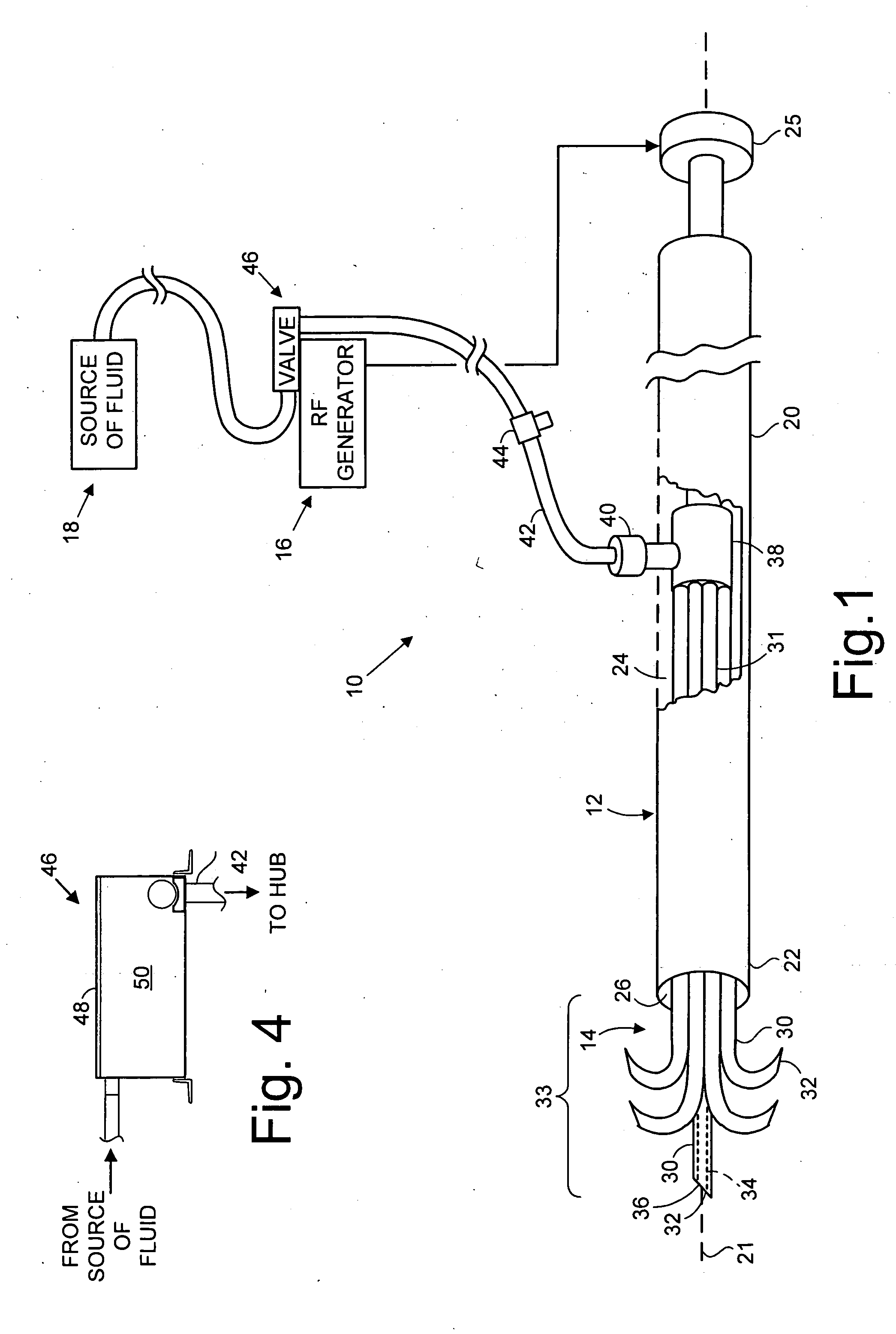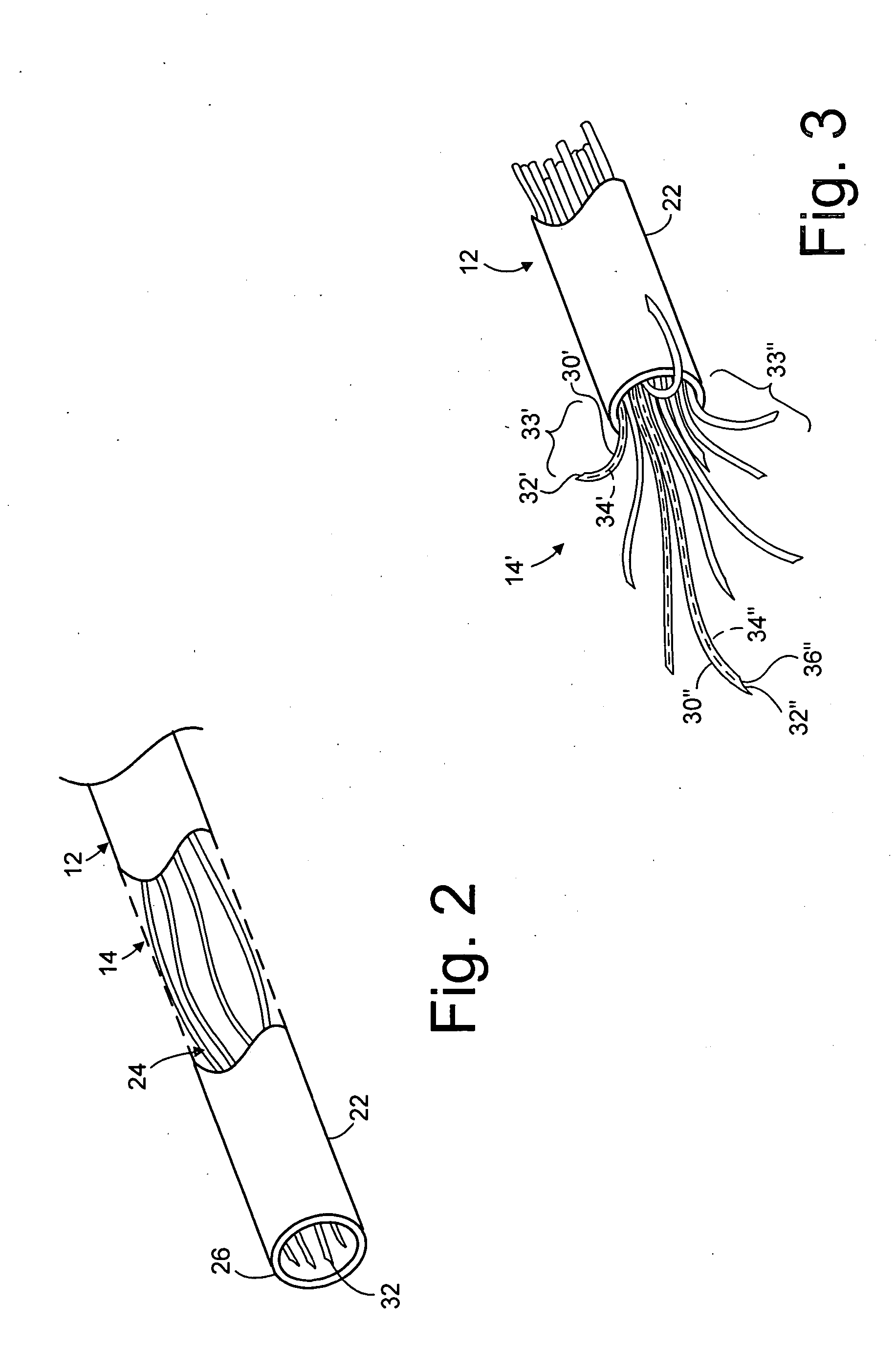Liquid infusion apparatus for radiofrequency tissue ablation
a tissue ablation and liquid infusion technology, applied in the field of apparatus for infusing fluids into tissue, can solve the problems of increasing the size of the resulting lesion, unable to achieve uniform heating of tissue within the target region, and unable to achieve necrosed tissue as desired,
- Summary
- Abstract
- Description
- Claims
- Application Information
AI Technical Summary
Benefits of technology
Problems solved by technology
Method used
Image
Examples
Embodiment Construction
[0021] Turning to the drawings, FIGS. 1-4 show a first preferred embodiment of an apparatus 10 for treating tissue, such as a benign or malignant tumor within a tissue structure (not shown). Generally, the apparatus 10 includes a cannula or other introducer 12 and an array of electrodes 14 deployable from the cannula 12. In addition, the apparatus 10 may include a source of electrical energy 16 and / or a source of conductive fluid 18 coupled to the array of needles 14.
[0022] The cannula 12 is an elongate tubular member including proximal and distal ends 20, 22 and a lumen 24 therein extending proximally from a distal port 26 towards the proximal end 20, thereby defining a longitudinal axis 21. The lumen 24 may extend to the proximal end 20, although the proximal end 20 may be substantially closed as shown. Alternatively, the lumen 24 may extend to a proximal port (not shown) in the proximal end 20 for removably receiving instruments, e.g., the array of electrodes 14 or a stylet (not...
PUM
 Login to View More
Login to View More Abstract
Description
Claims
Application Information
 Login to View More
Login to View More - R&D
- Intellectual Property
- Life Sciences
- Materials
- Tech Scout
- Unparalleled Data Quality
- Higher Quality Content
- 60% Fewer Hallucinations
Browse by: Latest US Patents, China's latest patents, Technical Efficacy Thesaurus, Application Domain, Technology Topic, Popular Technical Reports.
© 2025 PatSnap. All rights reserved.Legal|Privacy policy|Modern Slavery Act Transparency Statement|Sitemap|About US| Contact US: help@patsnap.com



